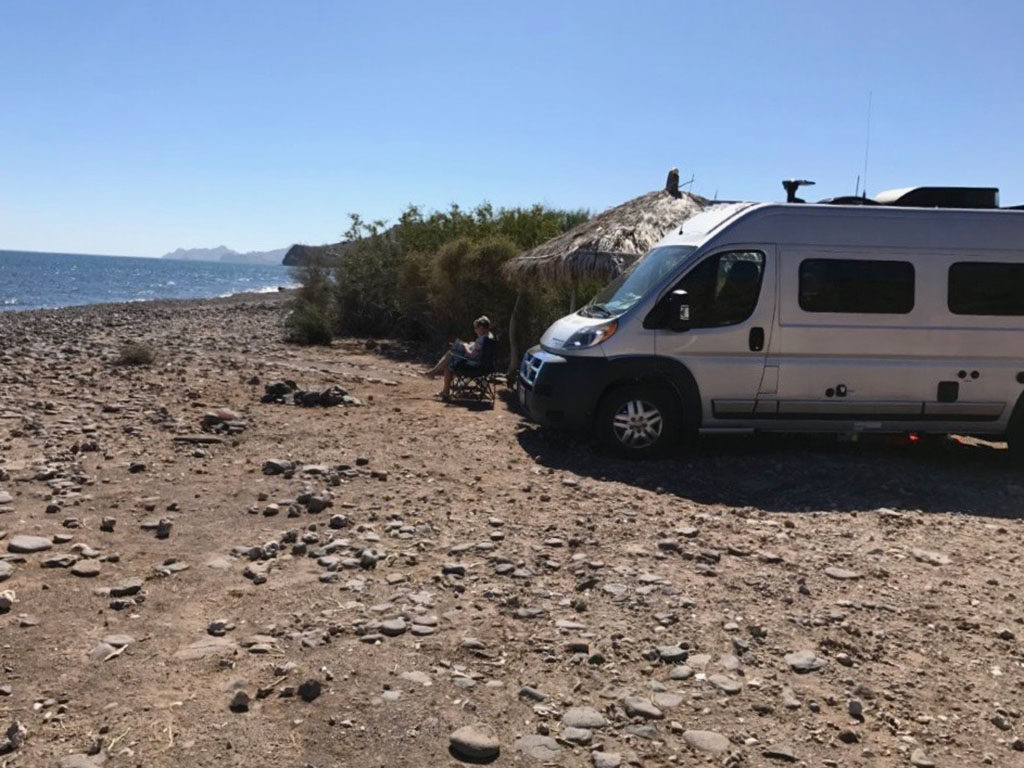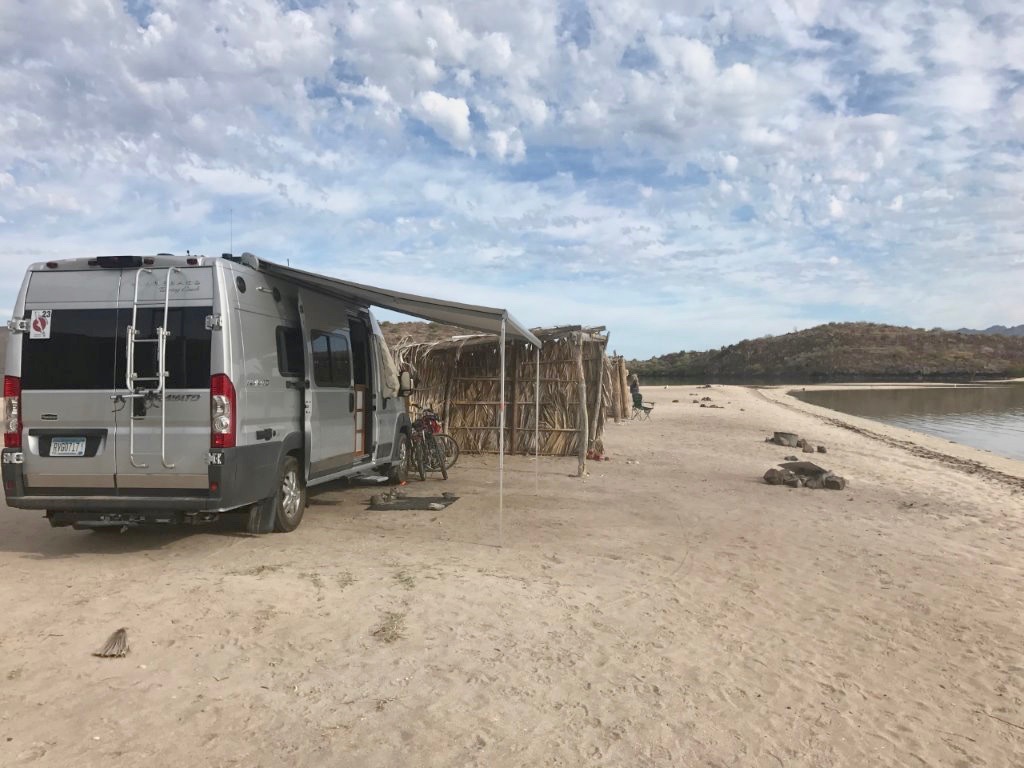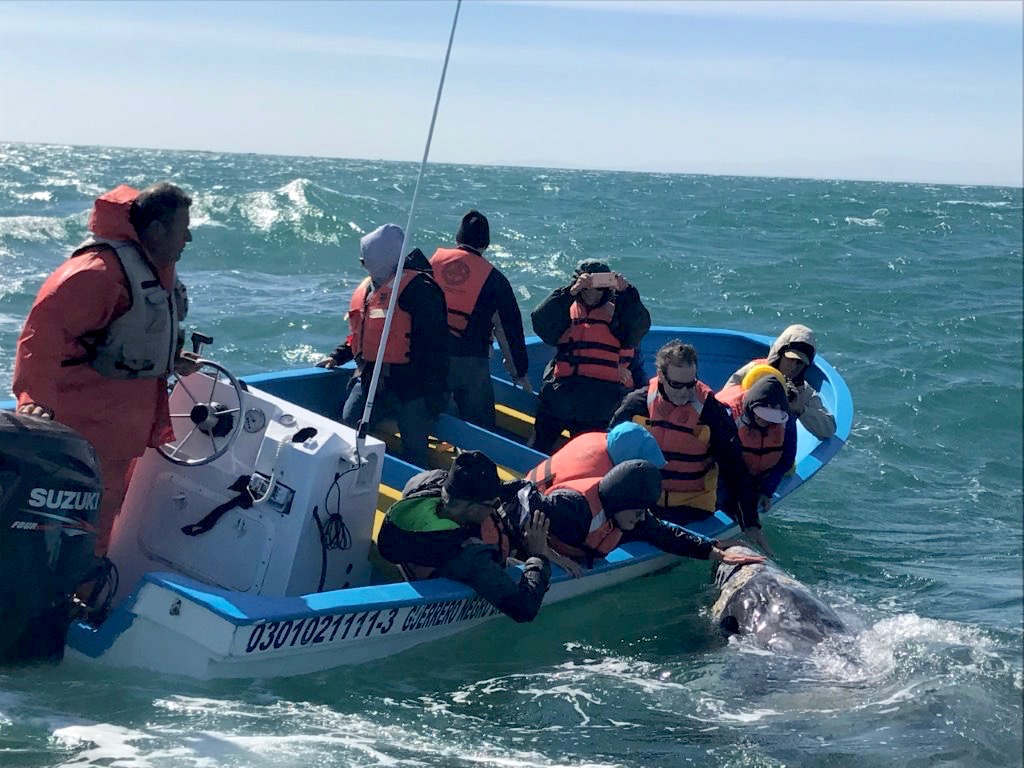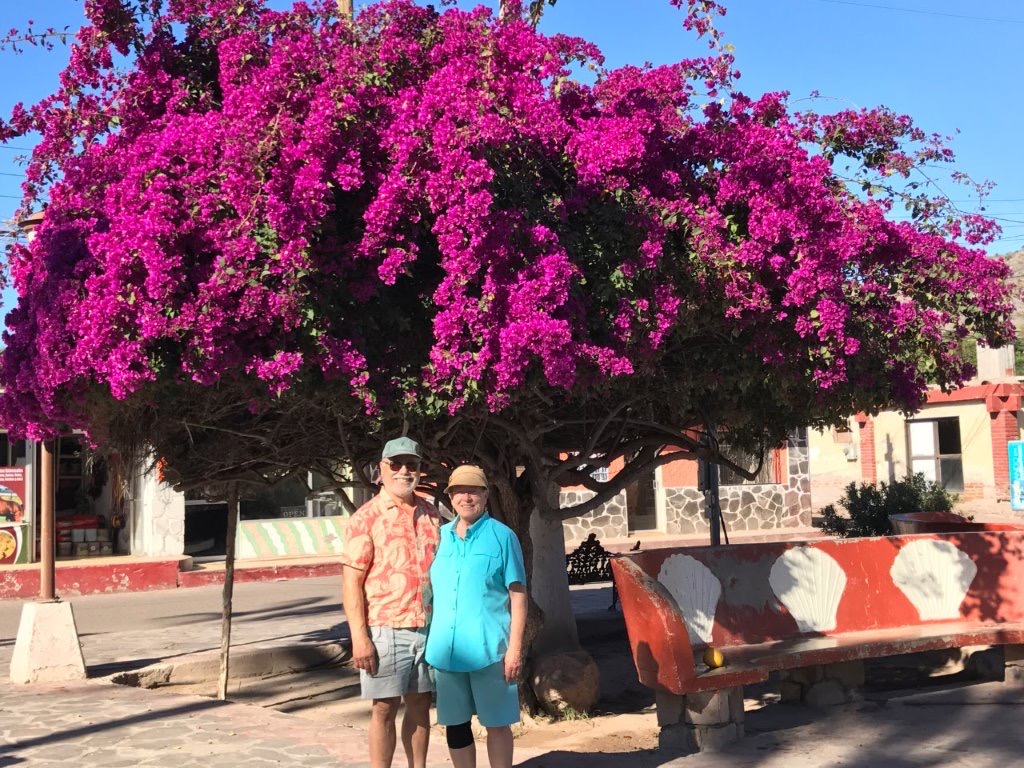
Born for The Baja
What recreation area spans 1,000 miles of continuous highway, is surrounded by the sea with uncountable beaches, and divided by mountainous terrain that separates alternating stunning valleys of desert, wildflowers, agriculture and high plains? Plus, there's unmatched whale watching, historic wineries and colonial cities with distinct culture and language. This is not some huge national park in a faraway continent -- it is Mexico's Baja California!
But before I dive deeper into why we loved this unique place, let me explain how we got there. My wife Mary and I took delivery of our 2017 Travato 59K just in time for the 2016 Grand National Rally in Forest City, IA. Before this, we only had limited camping experience (sleeping on the ground in a tent). So, starting from scratch, we prepped for a major shakedown trip with plans to leave from our winter home in Tucson and head for Mexico.

You may have heard that RV travel in Mexico is ill-advised, especially for newbies like us. But, what we found was entirely different from much of what we had been told. It may be that Baja, with its proximity to the U.S. West Coast, has become more tourist friendly than mainland Mexico. From the border authorities, to the police and military checkpoints, we felt relaxed and welcomed. However, Mexico is still a second-world country, so using common sense and taking precautions is prudent. For example, we preferred to camp with other RVers, especially when the location was in a remote area.
Fortunately, English is spoken by most sales people and campgrounds. And we were still able to do just fine in grocery stores and bakeries with our broken Spanish. Health concerns are also allayed with inexpensive purified water being available in nearly every Baja town. Pharmacies and medical facilities are available in the larger ones, too.
We were also pleasantly surprised by the clean restrooms at the national gas stations, Pemex. We were warned to BYOTP (Bring Your Own Toilet Paper!), but found this usually wasn't necessary. Several places asked for 5 pesos (a quarter) to use the facilities.
As for driving, the highways are 90% up to U.S. standards for two-lane secondary roads. Yet, some areas are noticeably narrow with potholes (in fairness, the holes were more numerous this year after unseasonably heavy rain). There are also stretches without a shoulder which presents a danger for the inattentive. A 50 MPH speed limit is recommended and night driving is strongly discouraged.

Being first timers in Baja, we hooked up with a group of travelers led by a delightful couple, John and Becky Smith, under the name Baja Winters. The Smiths have been sharing their love of the Baja going back 50 years when John and his teenage friends were searching for the perfect surfer beach. John states that he sees himself more as a facilitator, teaching some basics about navigating the Baja for a safe and rewarding experience. And when Becky spied our Travato, she said "That is the perfect rig for the Baja!"
Large Class As with towed vehicles (aka toads) and longer fifth wheel trailers don't do as well sharing the Mexican roads with 18 wheelers and buses. The full-service campgrounds with pull-through sites are disappearing as land values in the Baja have risen and development near cities has occurred. The Travato, of course, is no off-road vehicle, but we traversed unpaved mountain roads with hairpin curves safely -- which rewarded us with the most pristine and unpopulated beaches imaginable.
The boondocking capability due to the solar panel on the roof was also great. This allowed for three days of lights, food preparation, refrigeration and warm water without use of the generator or starting the Promaster's engine. Maybe later in the year, running the A/C would necessitate more energy use. But, all-in-all, the Travato is truly "Born for the Baja."

Here's a few highlights that make this an exceptional destination for both beginner and seasoned travelers:
Cave paintings are found in a number of places, including a 40-foot painting near San Ignacio. Some date back to pre-Columbian times. Most are visited with a local guide to protect the antiquity.
Whale watching cannot be matched anywhere else in the world. We were able to touch the whale mothers and calves at Guerrero Negro where about 2,000 Gray Whales give birth each February and March. Small boats manned by experienced captains take out groups of 12 to observe the whales while they enjoy the warmth and extra salinity of the Guerrero Negro Bay, before returning to Arctic waters. Certain whales called "friendlies" approach the boats out of curiosity and actually seem to enjoy being pet -- amazingly, they never hit the frail boats with their massive bodies or powerful tails. It was an unforgettable experience!

Great star gazing is available on nearly the entire peninsula of Baja. Once you put a little distance between yourself and any of the larger cities, the light pollution is minimal to none and the Milky Way really lights up!
Breathtaking scenery and vistas! Continuous mountain ranges separate the east from the west and the north from the south. Every mountain pass opens up to another expansive valley with a distinctly different landscape and fauna corresponding to the variations of rainfall and elevation. We were so fortunate that the early and heavy spring rains turned the agricultural areas into green carpets and transformed the normally arid areas into a blanket of gold, fuchsia and lavender spring flowers. Thank God for digital cameras!

Kayaking, hiking and biking along the coastline and numerous islands is exceptional -- especially on the Sea of Cortez side. Many beaches were connected by easily-hiked burro paths with occasional sightings of wild burros introduced by the Spaniards in the 1500s. Kayaking was first rate and we loved exploring the numerous calm inlets and bays. Although the kayaks were rented, we did have our bicycles with us, which allowed us to explore the little towns and travel the beach roads adjacent to our camp areas.
Cuisine in Baja does not include many U.S.-style restaurant chains, but we preferred the excellent and authentic Mexican eateries that abound. Cooking-in was aided by fishermen bringing fresh shrimp, scallops and fish to our parked RVs on the beaches. And farm trucks sold tasty tree- and vine-ripened fruit, berries and vegetables. Eating well was never a problem, and buying from the local producers is an experience in itself.

The culture is obvious in several colonial cities and restored 18th-century mission churches spread across the Baja. In La Paz (founded by Cortez), we experienced a distinctive Carnival festival. Other towns, like Santa Rosita, were formerly French mining towns with many artifacts from the hey-day of the boom years of a previous century.
Wine tasting is the surprising and undiscovered gem in Northern Baja. Wineries dating to the 1800s are neatly laid out in this excellent grape-growing region, supplying most of the wine for mainland Mexico and leaving little to export. We were treated to a hands-on demonstration of wine blending to enhance the color, flavor and smoothness of any vintage. Camping in the vineyard was an added treat.
Winnebago has experienced great sales success with their compact Class B motorhomes. Now I know why. In our own experience, we demonstrated the versatility and freedom this vehicle allows. And we could see the Baja differently than those with bigger rigs.

The Baja was magical for us. Maybe it's time for you to partake in this seemingly private playground of the U.S. West Coasters and Canadians. "! Hola!, mucho gusto, Baja."
Comments
Comments on this post are moderated, so they will not appear instantly. All relevant questions and helpful notes are welcome! If you have a service inquiry or question related to your RV, please reach out to the customer care team directly using the phone numbers or contact form on this page .